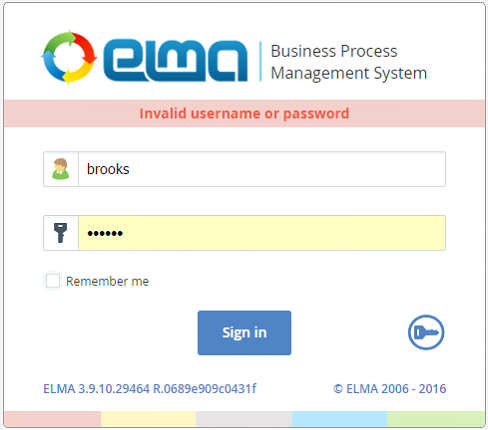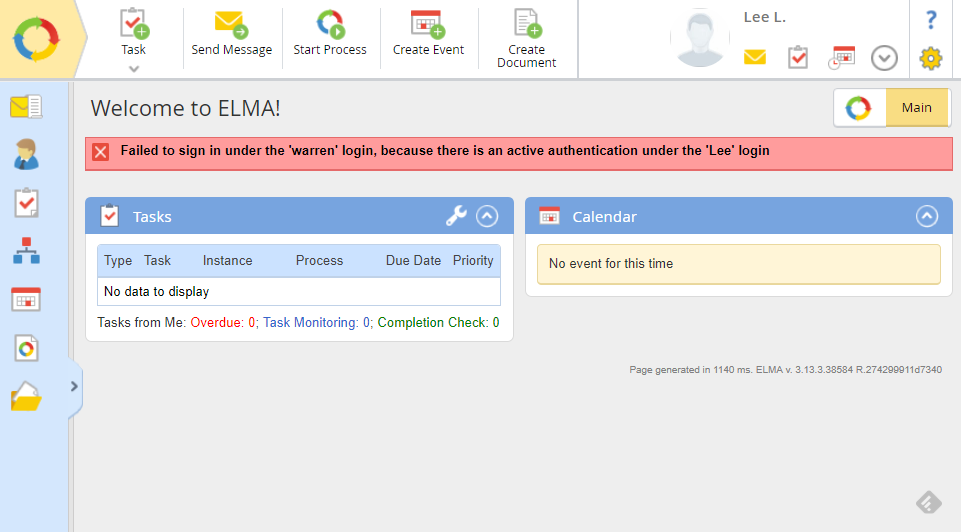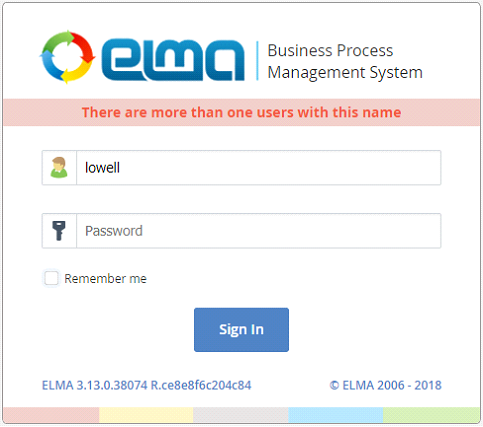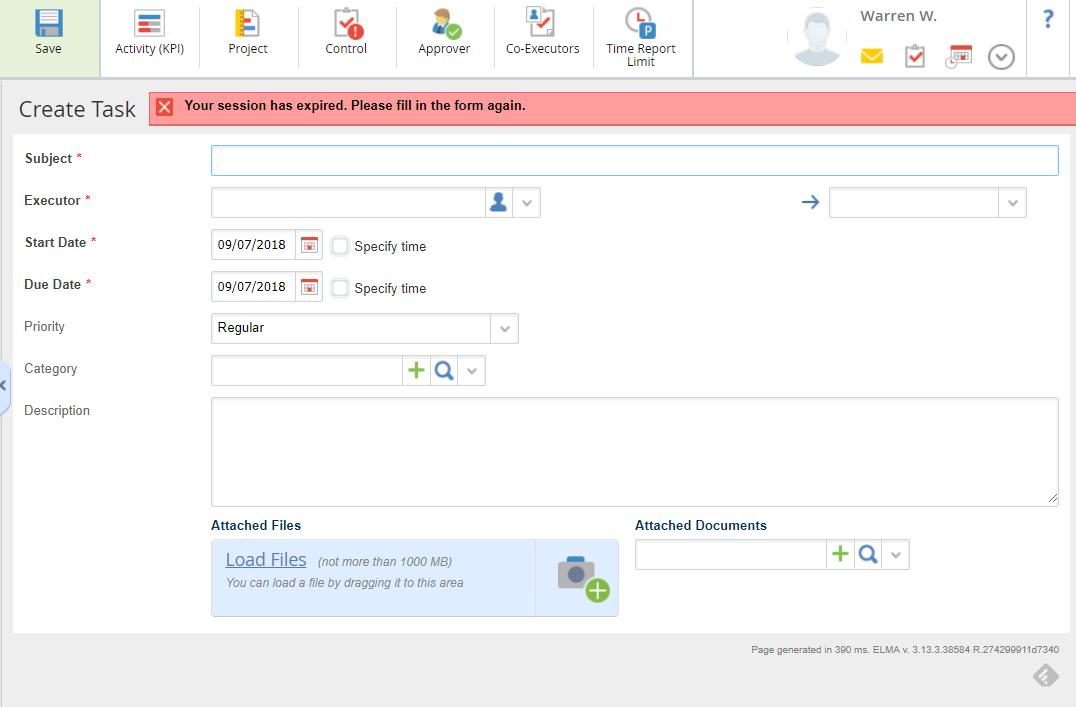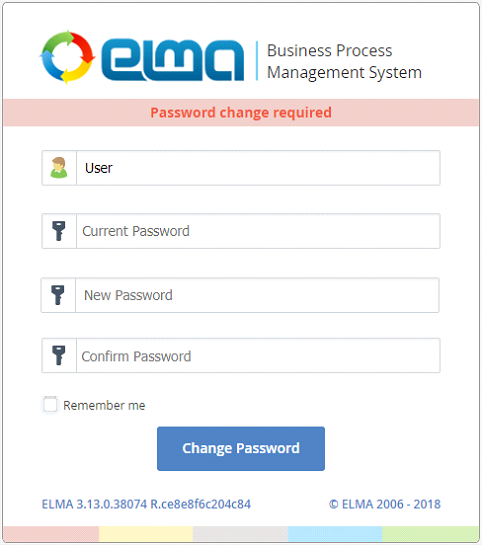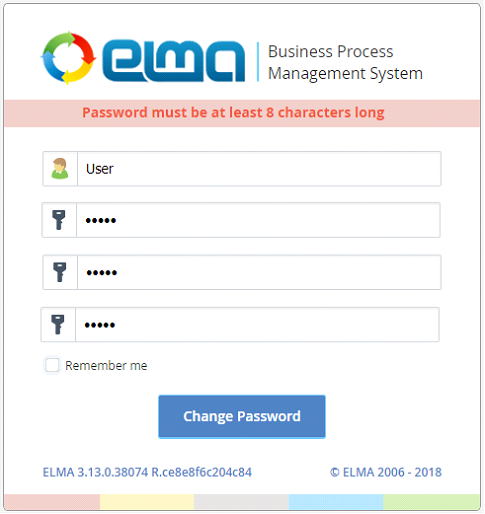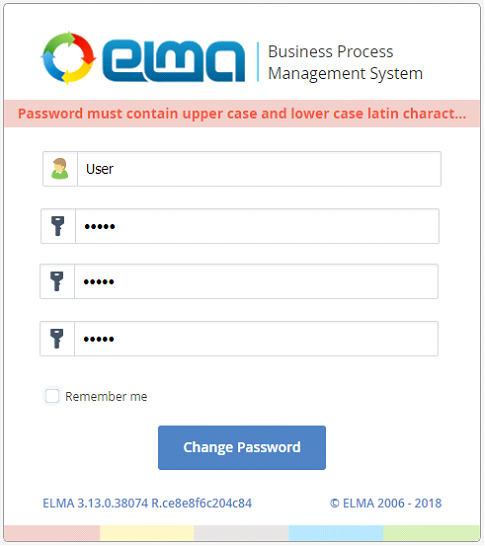Sign In Using Login and Password
By default, you sign in using your login and password.
You can access ELMA with a login and password from various supported browsers and devices.
ELMA supports Mozilla Firefox, Internet Explorer and Google Chrome.
Authentication in the system
To start the Web Application, enter the address or the name of the ELMA server and the connection port in your browser's URL bar (http://<ELMA server address>:<port>).
In the sign in window (fig. 1), enter the login and password.
|
|
|
Fig. 1. Authentication window
|
Possible errors when accessing ELMA with login and password
Invalid data
If the data that you have entered is invalid, you will see a respective message (fig. 2).
If needed, you can make access to ELMA available only from trusted devices.
In this case, when you try to access ELMA from other devices, your login or password are considered invalid, even if you type them in correctly. You can read more about working with trusted devices in the respective Help section.
Repeated authentication attempt
On one machine and in one browser (for example, Mozilla Firefox) you can only sign in to the system under one username at a time. If you open several tabs in the browser, you will still be able to sign in as only one user.
If you try to sign in under different usernames on two tabs of the same browser, you will only be logged in on the first tab. On the second tab, the page will be refreshed and the main page of Web Application will open, where the session will be started under the first username. You will see a corresponding notification (fig. 3).
Fig. 3. Authentication error
If you are working on several tabs under one username and sign out of ELMA on one of the tabs, the session on all the other tabs will be ended automatically.
If there are several users with the same name in ELMA, they see the following notification when trying to sign in (fig. 4):
|
|
|
Fig. 4. Authentication window. Notification about duplicated usernames
|
If an ELMA session expires, the user cannot submit any data on forms (for example on a task creation form). A session is considered expired if the user tries to submit the form after signing in under another user.
For example, user A starts to fill in a task form on one tab, but before finishing user A goes to another tab and signs out of the system, and user B logs in. If the user tries to submit the above mentioned form, the page will be refreshed, user A will be changed to user B and a notification about the error will appear (fig. 5).
Fig. 5. Error when sending a form
Exceeding the number of concurrent licenses
When a user signs in to ELMA, the number of unoccupied concurrent licenses is checked (if you use those).
If all the concurrent licenses are occupied (the number of concurrent license users is exceeded), other users will not be able to sign in. When trying to sign in, the following notification will be displayed (fig. 6):
Fig. 6. Authentication window. Exceeded number of concurrent licenses
Forced password change
A forced password change is required if in
Administration – System – Security in the
Password Security for Built-in Accounts section one or both of the following options are activated:
Forced password change at the first user sign in, Periodicity of forced password change (days), and also for the first
ELMA launch. In this case, when a user signs in to the system, they will see a window for changing the password (fig. 7).
Fig. 7. Authentication window. Notification about required password change
In this window, the user has to specify their current password in the Current Password field, and the Change Password button will become available. If you need a blank password, you can leave all the other fields empty. If you need a new password, fill in the New Password and Confirm Password fields.
Fig. 8. Authentication window. Notification about the minimal password length
Fig. 9. Authentication window. Notification about the required complexity of the password
See also:
Copyright © 2006–2019 ELMA


